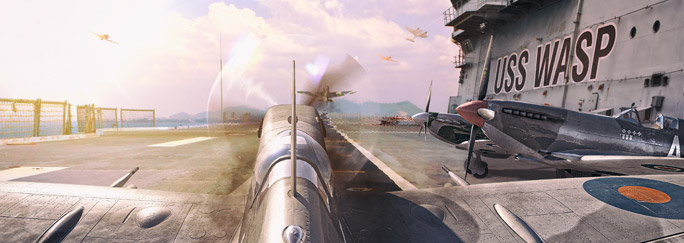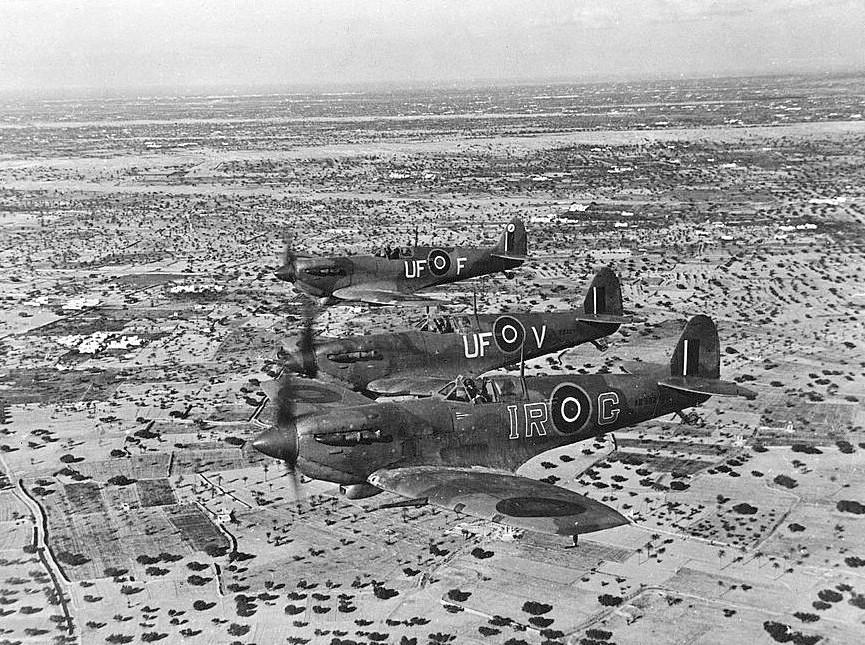-
![LANG-CODE-KEY]() LANG_NAME_KEY
LANG_NAME_KEY

Pilots,
On 20 April 1942, what was supposed to be just another Club Run – an Allied restock mission into the Maltese region during WWII – quickly turned into a spectacular example of what can happen when the enemy intercepts your communications. Nonetheless, the dramatic conclusion of Operation Calendar, as the mission was called, serves as a great setup for our newest special and we would be amiss if we let the opportunity go by to tell you its interesting backstory. So sit back, relax, pick up some discounted Spitfires and scroll on down to the History Flashback to hear the tale of this unusual incident.
‘Operation Calendar’ Special | ||
|---|---|---|
|
All offers and missions will be available |
||
Double Crew XP on every sortie
Reward your crewmen with extra XP for their loyalty in your service!
50% discount on the following plane:
 |
Supermarine Spitfire I |
Start your own Club Run mission by resupplying your hangar with a fresh influx of Spitifre!
30% discount on the following Premium plane:
 |
Supermarine Spitfire V DB 605 |
If you feel cheeky, try out the German Premium Spitfire – just don’t tell any real Brit about it!
Want to grab an extra 50% XP (along with the already doubled Crew XP) this coming week? Set your sights on our dedicated Club Run mission and your wish shall be granted!
|
Mission 1: Club Run | |
|---|---|
|
Goal |
Become one of the top 3 experience earners on your team flying the required aircraft. |
|
Reward |
50% extra XP for the battle |
|
Conditions |
|
|
Mission 2: Expert Hunter | |
|---|---|
|
Goal |
Destroy 3 enemy aircraft in one battle flying the required aircraft. |
|
Reward |
3 x High-Explosive Incendiary 20” ammunition belt |
|
Conditions |
|
It’s widely known that Spitfires performed well on their home soil in the Battle of Britain but did you also know that they were in service in many other foreign locations all over the European theatre of war as well?
One such place was Malta. At the time, the small island had been part of the British Empire and served the U.K. and its allies as a strategic stronghold in the Mediterranean. With Spain ruled by Franco, France signing an armistice with Germany in 1940 and Italy part of the Axis forces since the beginning of the war, Malta was (apart from Gibraltar), the only base that the Allies had left in the region. Not only did its location allow the control of all naval traffic into and out of the Mediterranean Sea, but it was also an important stopping point for supplies on their way to the frontlines of North Africa.
 |
_577x337.jpg) |
_398x319.jpg) |
| British Spitfires on deck of the USS Wasp (left & right) and in the air over Malta (middle) in 1942. | ||
Because of this, the island faced numerous heavy attacks from the Axis forces, who continuously bombed Malta and brought it to the brink of submission. The defeat could only be prevented thanks to a strong air defence compiled of mostly British aircraft, which repelled the enemy raids long enough for the majority of the Luftwaffe to be called away to the Soviet front.
‘Operation Calendar’ was part of the so-called ‘Club Runs’ – a series of missions that aimed to take U.K. and allied aircraft from the British mainland and deliver them to Malta. 52 Spitfires were loaded on the aircraft carrier USS Wasp, which departed from Glasgow on 14th April 1942. The planes were in bad condition, suffering from leaking tanks, faulty cannons and defective radios – problems that were pretty common back then and which RAF Command planned to rectify once the aircraft were delivered to their destination.

The standard operating procedure was that the planes would fly off the aircraft carrier to the Maltese airport once the ship passed close to Gibraltar. Although the pilots had reported the various faults that plagued the Spitfires, there was not enough time to repair any of them at sea. The final phase of the operation began on 20th April when 46 of the Spitfires, covered by functioning F4F Wildcats, finally took off. They actually managed to get to Ta’Qali airfield on the island. However, this was about as far as they went.
Unfortunately for the Allies, the enemy knew about the manoeuvre and descended upon the newly arrived planes with full force. Within minutes of delivery several waves of enemy aircraft, consisting of over 100 Junkers ‘Stuka’ bombers and Bf 109 Messerschmitts, attacked the parked planes on the ground and pretty much obliterated the surrounding airfield in one of the biggest targeted Blitz air raids of the Maltese siege. Due to the mechanical problems of the planes, the brand new Spitfires couldn’t be readied in time for their own defence and were completely destroyed before they could even fire a single bullet.
With the failure of the operation, the Allies had to send a new batch of planes, which essentially led to a repeat of the mission that was this time called ‘Operation Bowery’. Let this be a lesson for all you pilots to always make sure your plane is properly airworthy before heading into combat.
Make sure to always keep your own Spitfires airworthy, pilots!